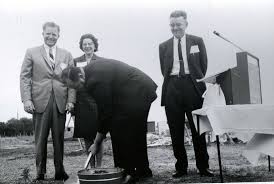 Everybody has an idea of what a chamber of commerce is. Whether it is from first-hand experience or urban lore and conjecture, we mostly think of a chamber in one of several ways.
Everybody has an idea of what a chamber of commerce is. Whether it is from first-hand experience or urban lore and conjecture, we mostly think of a chamber in one of several ways.
I was first introduced to chambers when my dad was a businessman in an Arizona small town. In those days (the 1950s) and in that town, it was the movers and shakers in town, the guys who owned the biggest businesses and were sort of an exclusive “club” who ran the town. Dues, sure, were a requirement, but so was being able to contribute in some way–influencing business and the public, hosting an event, being prominent and having money.
It conjured up an image to me that I held for years that it was a group of middle-aged white men meeting behind closed doors to decide things for the rest of us. Well, sort of.
My vision of a chamber changed about 7 years ago when I started hanging out with Dallas-area chambers as a volunteer and member. I found that, for the most part, chambers did three things:
- Brought the business leaders of a community or city together with the common goal of growing business and making their town a better place to live. It was a gathering place.
- Influenced municipal policy by gauging opinion of the community leaders who are members.
- Provides information to its membership to allow them to grow and prosper.
That was the view from the outside. About a year and a half ago I was hired on as a full-time, W-2 employee of the North Dallas Chamber. It has been a great experience and a learning one. My time there has given me another perspective by which to judge chambers.
First of all, “commerce” is the operative word, not only for the membership, but also for the chamber itself. While we are a non-profit organization, we do have to generate revenue and a form of profit. Dues are one outlet by which to generate these revenues. The other, and larger component is sponsorships.
I also learned that there are several levels and classifications of members. The NDCC is made up of about 900 member companies, ranging from solo entrepreneurs to Fortune 100 companies. The “rank and file” small businesses make up about 40% of the membership and are basically dues-paying participants. Like most profit-minded businesses, 20% of the members provide 80% of operating dollars (the bigger guys and their big sponsorship bucks).
While this might seem to be a disparity, it won’t be if we play our cards right: grow and diversify the membership and encourage membership among people of influence. Also position the chamber as a marketing tool (no unlike how NPOs in the cause-related world leverage marketing dollars from their profitable backers). We are lucky in that we have a full slate of content-rich programs that are great marketing vehicles for sponsor companies to both attract and promote their prospects and clients within.
After 18 months, multiple projects (Tech Conference, Young Professionals program, member relationship management and, oh yes, the annual BBQ) and two international chamber conferences (the ACCE meeting each summer), I have a much better handle on how these organizations work and benefit both sides (themselves as well as their clients/members).
Chambers have served a great role in the American experience for over 100 years. Their ability to morph and adapt will determine if they meet the needs of today’s and tomorrow’s business communities. I hope to get to ride along a bit longer to see if I can help make a difference.
Relentless

